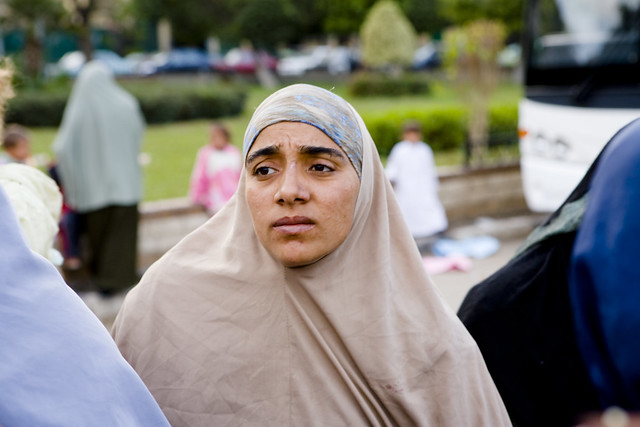The Higher Strike Committee for the Real Estate Tax Collectors, whose representatives are due to meet with Finance Minister Youssef Boutross Ghali tomorrow, issued a new statement.
Tag: strikes
Kafr Elw portraits
Like the case of Qale’t el-Kabsh slum, the protests by Kafr Elw’s residents are mainly led by the women. The reason you hear from them (in both cases) is that their husbands have already been arrested and tortured by the police, and they fear another detention decree.
The families are under the impression that if women step forward, the police will be less likely to attack. [Of course our experience with the Egyptian police whether when it comes to demonstrations, or women in custody, proves to be different, but occasionally the logic applies if there are no direct orders from senior pigs to disperse the demo.]
Anyone who is closely observing the ongoing wave of social struggles in the country, whether they are in the factories, the countryside, or the urban slums, can well see there is a high participation of women in the protests, strikes and sit-ins.
In cases like the Mahalla strike in December 2006, it was 3000 women workers from the garments sections who started the strike, credited with unleashing the Winter of Labor Discontent. The involvement of women in strikes later was noticed in the textile sector (where the garments sector is overwhelming feminine), and the cases are numerous, though I previously highlighted on this blog more or less three cases only: Mansoura-España, Kafr el-Dawar, El-Hennawi Tobacco. But I can safely say that in virtually every strike I attended or heard of if there were women present in the labor force, you would find that they have a say.. and in most of the occasions, you can find a figure or two at least among the spontaneous labor leaders who are mushrooming in the places that witnessed industrial conflicts or clashes with the authorities over land and/or housing.
The other interesting phenomenon you see in the current social struggles is the Coptic-Muslim relations. While the country is going through some of its worst sectarian tensions, ringing some bells also about the episode that preceded Sadat’s killing, a contradictory process is happening in the industrial urban centers that have or are witnessing the revival of industrial action. Coptic workers and civil servants for example played a leading role in railway and the Real Estate Tax Collectors’ strikes, two sectors where Copts have constituted a sizable portion of its labor force from their founding. And in fights over slums, like the ongoing Kafr Elw crisis, I noticed some of the men who were protesting outside the Governorate HQ had crosses tattooed on their hands (a practice mainly common among working and middle class Copts), still they were standing side by side with veiled Muslim women in lobbying the govt, organizing and planning the next move to save their community.
These social struggles from below are the ONLY way forward to unite the oppressed from the two sects and genders against the system that in essence bred such discrimination and exploits it for its survival, despite all the horseshit we hear coming from the presidency about how the regime is committed to “equality” between the citizens.
More needs to be said about that, and about the Egyptian working class and religion, but I’ll reserve it to a future posting.
600 bus drivers on strike in Mahalla
Kareem has the details.





